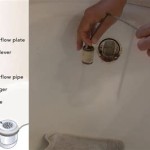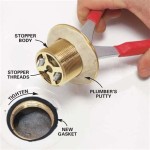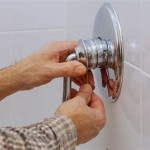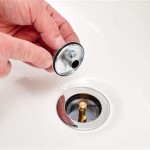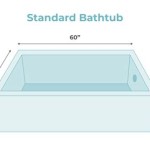Replacing Your Bathtub with a Hot Tub: A Comprehensive Guide
The decision to replace a bathtub with a hot tub inside a home is a significant undertaking that requires careful consideration of various factors. This remodel often represents a desire for enhanced relaxation, therapeutic benefits, and a luxurious bathing experience beyond the capabilities of a standard bathtub. However, successfully executing this transformation involves navigating logistical challenges, understanding plumbing and electrical requirements, and ensuring compliance with local building codes. This article provides a comprehensive overview of the key aspects to consider when undertaking this type of project.
Assessing Feasibility and Space Requirements
The initial step in replacing a bathtub with a hot tub is to rigorously assess the feasibility of the project within the existing bathroom space. Hot tubs, even those designed for indoor use, typically occupy a significantly larger footprint than standard bathtubs. Therefore, accurate measurements of the bathroom are crucial to determine if the space can comfortably accommodate the desired hot tub model while allowing for adequate circulation and access for maintenance.
Beyond the physical dimensions, structural considerations are paramount. A filled hot tub can weigh thousands of pounds, potentially exceeding the load-bearing capacity of the existing floor structure. Consulting with a structural engineer is highly recommended to evaluate the floor's strength and determine if reinforcement is necessary. This assessment should account for the weight of the hot tub itself, the water it holds, and the weight of the occupants. Failure to address this issue could lead to structural damage to the home.
Furthermore, access to the bathroom needs evaluation. The hot tub must be maneuvered into the bathroom, which may necessitate widening doorways or temporarily removing fixtures. The size and weight of the hot tub will dictate the complexity of this process. Early planning of the access route minimizes complications and potential damage during installation.
Ventilation is another critical factor in confined spaces, especially when considering the high humidity that accompanies hot tub use. Inadequate ventilation can lead to moisture buildup, promoting mold and mildew growth, which can damage structural components and create unhealthy living conditions. Existing bathroom ventilation systems may need augmentation or replacement with a more powerful exhaust fan specifically designed for high-humidity environments. A dehumidifier may also be considered as a supplementary solution.
Understanding Plumbing and Electrical Considerations
Hot tubs require significant plumbing and electrical modifications compared to a standard bathtub. Plumbing connections must be adapted to accommodate the hot tub's water supply and drainage system. Most hot tubs require a dedicated water line with sufficient pressure to fill the tub efficiently. The drain line must be properly sized to handle the rapid discharge of water during draining. Backflow prevention devices are also essential to prevent contamination of the potable water supply.
Electrical requirements are even more demanding. Hot tubs require a dedicated electrical circuit with a Ground Fault Circuit Interrupter (GFCI) for safety. GFCIs are designed to detect ground faults and immediately cut off power, preventing electric shock. The amperage of the circuit must be sufficient to handle the hot tub's heating element, pumps, and other electrical components. Improper electrical wiring can create a serious fire hazard.
Engaging licensed plumbers and electricians is crucial for these tasks. They possess the expertise to ensure proper installation and compliance with local electrical codes. Attempting to perform these modifications without proper qualifications can lead to dangerous situations and void the hot tub's warranty. Permits are often required for plumbing and electrical work, and obtaining the necessary permits helps ensure that the installation meets all safety standards.
Furthermore, the hot tub's location relative to existing plumbing and electrical infrastructure will impact the complexity and cost of the project. Locating the hot tub closer to existing plumbing and electrical connections can reduce the amount of new piping and wiring required, simplifying the installation process and minimizing expenses.
Choosing the Right Hot Tub and Preparing the Space
Selecting the appropriate hot tub model for an indoor installation involves careful consideration of its features, dimensions, and energy efficiency. Indoor hot tubs are typically smaller and designed to minimize water splashing and noise. Pay attention to the insulation properties of the hot tub to minimize heat loss and reduce energy consumption. Features such as adjustable jets and water temperature controls contribute to a personalized bathing experience.
Preparing the bathroom space for the hot tub involves several key steps. The existing bathtub needs to be removed, and the area thoroughly cleaned. The floor should be leveled and reinforced as necessary to support the weight of the filled hot tub. A waterproof membrane should be installed beneath the hot tub to protect the subfloor from moisture damage. This membrane acts as a barrier, preventing water from seeping into the underlying structure.
Creating a comfortable and functional environment around the hot tub is also important. Consider adding non-slip flooring to prevent accidents. Installing storage solutions for towels and bathing accessories enhances convenience. Adequate lighting is essential for safety and ambiance. Consider installing dimmable lights to create a relaxing atmosphere. Noise reduction measures, such as soundproofing the walls, can minimize noise transmission to other parts of the house.
Additionally, think about the aesthetic integration of the hot tub into the bathroom's overall design. Coordinating the hot tub's color and style with the existing décor creates a cohesive and visually appealing space. Using natural materials, such as wood and stone, can create a spa-like atmosphere. The goal is to create a relaxing and inviting environment that complements the hot tub experience.
The project should also account for long term maintenance. Design choices that allow easy access to the hot tub’s components are important. This allows for easier cleaning, repairs and maintenance. Properly planning for these issues will reduce difficulty and costs in the future.
In conclusion, replacing a bathtub with a hot tub is a complex project that demands thorough planning and careful execution. Addressing structural concerns, understanding plumbing and electrical requirements, and choosing the right hot tub are essential for a successful transformation. Consulting with qualified professionals and obtaining the necessary permits are crucial for ensuring safety and compliance with local building codes. The result can be a luxurious and therapeutic addition to the home, providing years of relaxation and enjoyment.

We Took Out The Jacuzzi Tub To Make Large Shower Results Are Stunning

Replacing That Large Tub No Uses Anymore Superior Construction And Design Llc

Diy Whirlpool Tub Installation Transform Your Bathroom

Replacing That Large Tub No Uses Anymore Superior Construction And Design Llc

Jacuzzi Jet Tub Swap

Jacuzzi Walk In Tubs Cost By Brand Size And Features

Replacing That Large Tub No Uses Anymore Superior Construction And Design Llc

10 Bathroom Jacuzzi Designs Ideal Size Vs Bathtub

Removing Jetted Tub And Replacing With Freestanding Tips Hometalk

The Ultimate Guide To Jacuzzi Bath Remodel Cost
Related Posts



